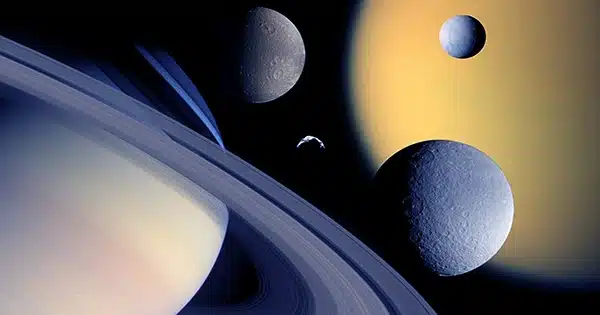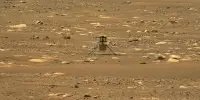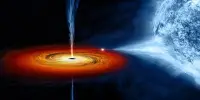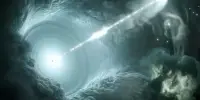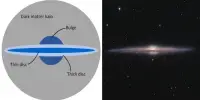If you’ve ever played Kerbal Space Program, you’ll understand how difficult it is to get your spacecraft into the desired orbit. In reality, it’s considerably more difficult. This is why a proposal to examine all of Saturn’s major inner moons at once is quite impressive.
At a high level, orbits are quite simple. Planets and moons are made out of ellipses. Spacecraft normally follow an elliptical or parabolic course after launch, so it’s simply a matter of aligning your spacecraft’s orbit with your destination and place of origin. If you know how to do the math, you can do the computations by yourself. Several early science fiction writers, like Robert Heinlein and Hal Clement, did precisely that to guarantee the veracity of their space-travel tales.
These straightforward calculations, however, only define fly-by trajectories and do not account for energy-saving techniques like gravitational slingshots. Even the early trips to Jupiter and beyond relied on gravitational assistance, which is challenging to calculate, because transporting a spacecraft to the outer solar system requires such large energy requirements.
And, as we’ve seen with missions like Juno and Cassini, putting a spacecraft in orbit around a planet gives us lots of time to collect data. A trip to Saturn, for example, would ideally want to arrive at the ringed planet in a fair amount of time, then go into a series of orbits around the planet that includes many flybys of intriguing moons, but that’s a tall order for a mission.
One of the difficulties is related to orbital energy. To go to Saturn rapidly, you’d have to build up a lot of speed. Much of that speed must be lost in order to enter orbit. This is especially difficult if you want your spacecraft to orbit deep into the planet’s gravitational well. For the Cassini mission, the team settled on orbits that occasionally dipped near Saturn’s inner moons. This was alright because Cassini’s primary target was the moon Titan, which is rather far from Saturn.
Astronomers would love to get a good look at Enceladus on a return expedition to Saturn. We know it has a lot of liquid water and is a good contender for life. However, it is located deep within Saturn’s gravitational well, with an orbital radius one-fifth that of Titan. The Enceladus Orbilander mission, which would orbit the moon for nearly 18 months, is currently the most powerful proposed mission. However, this would preclude the expedition from doing in-depth research on other Saturnian moons.
This is where the new proposition enters the picture. Rather than focusing solely on Enceladus, why not spend time with all of Saturn’s major moons? To do this, the team suggests a complicated set of orbits powered by an electric propulsion motor. Such an engine, also known as an ion thruster, might deliver a little amount of thrust over long periods of time. The objective is to gradually shift orbits rather than abruptly shift orbits. These dynamic orbits are exceedingly complex to compute, but they save a lot of energy and can be changed over time.
The team’s concept outlines how electric propulsion may power a voyage to Enceladus and Titan, as well as Dione, Tethys, and Mimas. Depending on the mission’s priorities, it might be placed in orbit around each of these moons, making many close passes to each. Depending on the mission’s length, the electric propulsion could be solar or nuclear-powered.
This preliminary plan is only a proof of concept, but it demonstrates that the next expedition to Saturn does not have to pick between Enceladus and another moon. If we can be steely-eyed about the orbital trajectories we choose, we can take a magnificent tour of the Saturnian system.
